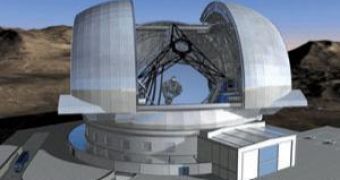Astronomy has gone a long way since the telescope was invented, and this device allows today's scientists to detect and deduce the presence of large planets outside our solar system. Still, the limited technology we have restrains the possibilities of finding smaller, Earth-like planets which may actually be more inhabitable than any planet we have observed so far. But this is about to change, promise the experts, as the development of three extra-large telescopes has already been set in motion.
The largest telescope currently available, the 10.4-meter wide Gran Telescopio Canarias located in the Canary Islands in Spain, will be overshadowed by the 24.5-meter Giant Magellan Telescope (GMT), the Thirty Meter Telescope (TMT), as well as by the 42-meter European Extremely Large Telescope (E-ELT) in less than a decade. These will be able to gather sufficient light from planets in order to enable the experts to study them by spectroscopic means.
"Are there Earth-like planets in the habitable zones of nearby stars? That is one of the big questions we'd like to answer," shares Markus Kissler-Patig, an E-ELT developer at the European Southern Observatory in Garching, Germany, as quoted by New Scientist. Black holes, others than our own Milky Way's, will also begin to unveil their mysteries thanks to measurements performed on their nearby stars, "With the TMT, there should be quite a few black holes at the centre of nearby galaxies that we ought to be able to study," explains Jerry Nelson, a TMT scientist from the University of California in Santa Cruz.
The main challenges that had to be addressed were the large dimensions of the primary (the first mirror that collects the light and transmits it to the secondary and the tertiary, respectively), but they have been divided in many synchronized parts in the case of the three telescopes. Then, there was the matter of reducing the distortions generated by the atmosphere, which each addressed differently, either by switching the secondary into a deformable mirror (GMT) or adding a fourth deformable one (quaternary, like E-ELT).
In any case, "We are going to depths of the universe and to a spatial resolution that we have never achieved before," states Kissler-Patig. "You are likely to discover things that you absolutely hadn't expected."

 14 DAY TRIAL //
14 DAY TRIAL //